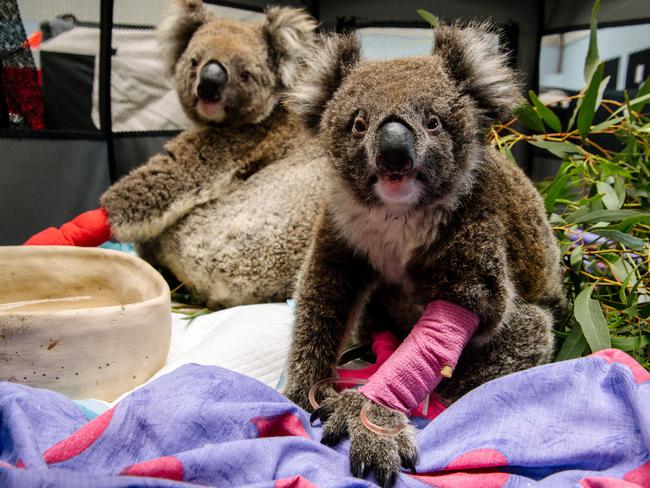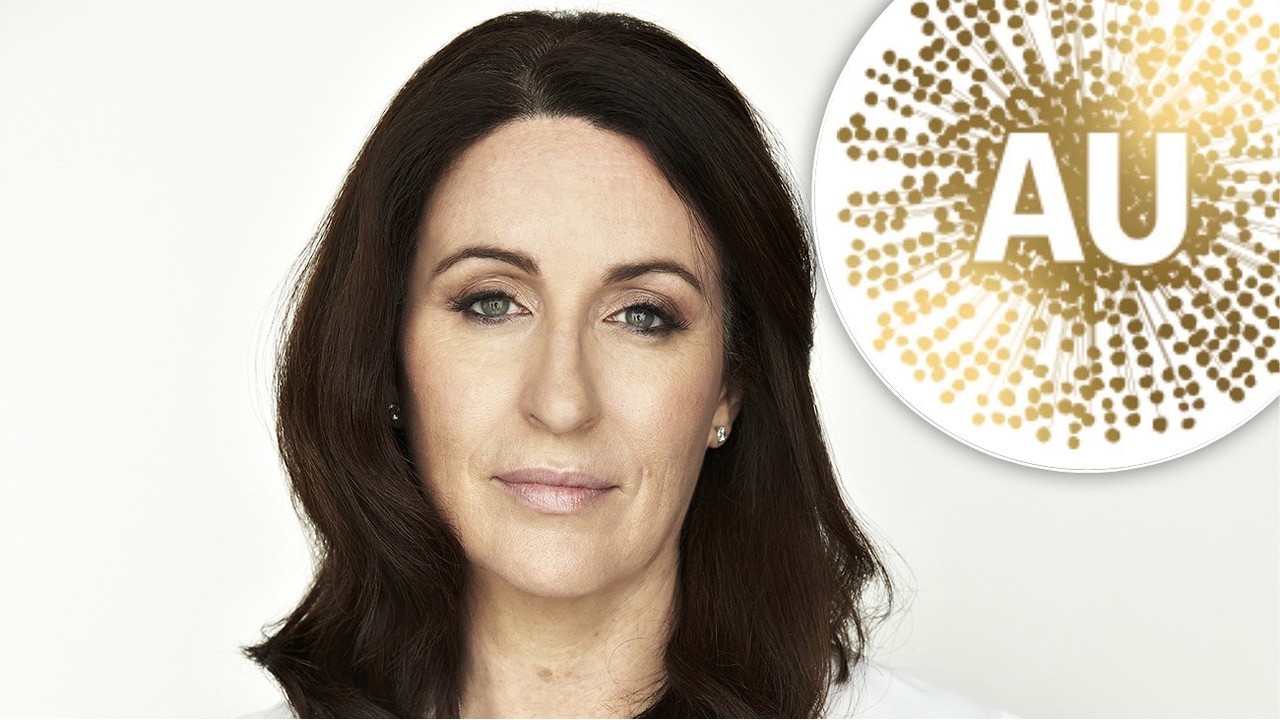Why animal losses hit us so hard
Images of native wildlife affected by the bushfires are profoundly distressing – and the estimated one billion animal deaths demand determined action on climate change, writes David Mills.
Rendezview
Don't miss out on the headlines from Rendezview. Followed categories will be added to My News.
It didn’t happen at the polar ice cap.
It didn’t happen to the low-lying islands of the South Pacific.
It didn’t happen in Cape Town, or Chennai, or Sao Paulo, or any of the other world cities that almost completely ran out of water.
No, climate change’s first truly massive disaster happened here — in Australia. In much-loved little towns like Broulee, Cobargo and Mallacoota.
Twenty-eight lives lost. More than 2000 homes destroyed. More than 10 million hectares burnt.
We could call it a megadisaster, except that term undervalues the scale of what has happened. University of Sydney Professor Chris Dickman estimates at least one billion animals have perished. The technical term for that would be a gigadeath.
MORE FROM DAVID MILLS: Little habit is what’s wrong with the world right now
One billion. It’s a figure that’s impossible to fully comprehend.
But there is something about the animal bushfire victims that hooks the gut like nothing else.
Images of burnt koalas in rehabilitation centres have dominated our social media. Celebrities have referenced Australia’s native wildlife in heartfelt Golden Globes speeches and Instagram posts.

John Grant from the Wildlife Information and Rescure Service (WIRES) in NSW said he had been inundated with media requests from around the world – Germany, Canada, the US, the UK, Sweden, Finland and Poland.
“There’s been so much concern; it’s been constant,” he said. “We’ve always known that Australian animals are popular, but we didn’t know how popular.”
Our concern for animals in bushfire tragedies hasn’t always been so top of mind.
Wikipedia’s entry on the 1983 Ash Wednesday tragedy is a reminder of the devastation of that event — 75 people killed, more than 2500 homes lost — but it contains just the briefest of references to “numerous native animals either dead or later destroyed”.
That accords with my memory, and the memory of other people I have spoken to. We simply never used to read about the wildlife victims of bushfires. (It’s also interesting to note that WIRES itself is only 34 years old.)
MORE FROM DAVID MILLS: The TV show that says everything about the modern era
The shift in our thinking was first apparent in the wake of the 2009 Black Saturday tragedy, when footage of a thirsty koala sipping water from a firefighter’s bottle went viral. Our current disaster has seen many similar images come to the fore.
“As a society, both in Australia and globally, we are becoming increasingly aware of the value and the needs and rights of animals,” said Dr Matt Beard, a Fellow at The Ethics Centre. “We are now including them in our audit of the cost of bushfires.”

Our contemporary concern about wildlife reveals the biases against nature we collectively held in the past, Dr Beard said. These biases, he said, “have helped get us into the position where the environment is under pressure”.
The idea that those who were concerned about animal suffering were somehow less compassionate towards human suffering was a “hasty conclusion” that we shouldn’t jump to, he warned.
But he also noted that “our compassion and our empathy can be led by non-rational factors” – in this case, the extreme cuteness of Australian marsupials.
It’s no wonder that koalas have featured in online social media posts about the bushfires more than any other animals. They have been badly affected, sure, but let’s face it – they look like living teddy bears.
Of course, wanting to save the koalas is not a bad impulse. It’s just that if you only want to save the koalas you’re missing the scale of the problem.
“There’s a tricky ethical balance to be struck when you are trying to raise concern for a worthy cause, that you spotlight the group that you think is going to get you the most dollars rather than all the potential victims,” Dr Beard said.

Compare the koala and the flying fox, for example. They’re both native, and both been badly affected by the current crisis, but while those images of injured koalas tug at our heartstrings, the flying foxes, sometimes despised for their noise, smell and capacity to spread disease, have received less attention.
(I must be in the minority on flying foxes. I find them completely adorable.)
John Grant from WIRES says Australia’s native bushland will need the flying foxes to help them regenerate.
“They are among the best natural pollinators we have,” he said. “We need them more than ever.”
Those international media crews who contacted WIRES “originally were only interested in hearing about the koalas,” Mr Grant said.
“They’re such an emblem of Australia, and people believe that you can just pick them up. But as time has gone on, they want to know about all the species.”

The extent of Australia’s biodiversity losses from the bushfires will take a long time to determine. Mr Grant said it can be weeks before groups such as WIRES can access fire-ravaged areas. There are fears entire species will have been wiped out.
MORE FROM DAVID MILLS: Sydney, get used to being beaten by Melbourne
Professor Dickman has warned that Australia is at risk of losing a significant proportion of its biodiversity, and because of our uniqueness, that loss would be global.
The world is watching us. We did not deserve to be the site of the world’s biggest-ever mass climate-change related disaster, but this fate is ours. We must act to prevent more.
And to those carping commentators who spout the line that Australia is only responsible for 1.3 per cent of global emissions, so we should do nothing at all: time’s up on that fatuous piece of rhetoric.
In the wake of these bushfires, that argument has been exposed for what it is: an abject cop-out. If it’s not a solution, or at least part of a solution, it’s not an answer.
David Mills is a News Corp journalist
Originally published as Why animal losses hit us so hard


